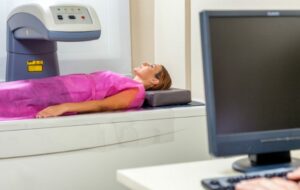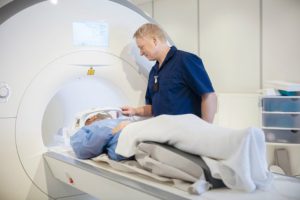Managing Radiation in Radiology: How Safe Is it?
In radiology, there are a variety of procedures which utilise ionising radiation technology to produce internal images. Scans such as computerised tomography (CT scan) and X-rays use this type of radiation, and therefore must be approached with a sense of prudence and care.

Managing Radiation in Radiology: How Safe Is it?
In radiology, there are a variety of procedures which utilise ionising radiation technology to produce internal images. Scans such as computerised tomography (CT scan) and X-rays use this type of radiation, and therefore must be approached with a sense of prudence and care.
Although radiation does pose certain threats to those exposed, we can take steps to manage radiation exposure to patients. X-rays and CT scans are relatively safe procedures. Still, patients may be curious when faced with a radiological procedure: just how safe is it?
Managing Radiation Through Dose Control
While X-rays do contain potentially harmful radiation, physicians and technicians opt only to perform these procedures when the benefits far outweigh the risks. An x-ray will be performed only when necessary to aid in patient diagnosis or treatment. Undergoing an x-ray, you can also rest assured that the scan is performed by a highly trained and knowledgeable technician. Your technician will ensure that your x-ray utilises the lowest dose of radiation possible to achieve the desired result. An x-ray is a very quick instance of radiation exposure and generally involves very small amounts of radiation. An x-ray may expose you to tiny amounts of radiation, but should pose exceedingly little risk. According to the Environmental Health Directorate of the Department of Health, Western Australia, ‘the increased cancer risk from a single chest x-ray is about 1 in 400,000. In comparison, the lifetime incidence of cancer in the general population is about 1 in 4.’ Humans are constantly exposed to background radiation all around us, from natural radiation in the air, earth, and water. For many X-ray examinations, the radiation dose is no greater than the average dose a human would encounter from natural background radiation over a period of one year.
CT Scans – The Benefits Outweigh the Risks
A CT scan exposes a patient to a greater amount of radiation than does a traditional x-ray. However, it is important to reflect on the importance of the CT scan in treatment and diagnosis. As CT scans are not as common as an x-ray, they are only chosen when they are truly needed for a patient. A CT scan is a highly effective way to obtain a detailed image of the patient’s body. Utilising a CT scan may help determine the cause of a more serious illness, or catch a potential health concern for a patient. In a situation such as this, the CT scan provides more benefits than potential harm to the patient, and its use is recommended, if not absolutely necessary.
But let us still examine the risks.
Read our articles and FAQs
We’re delighted to provide updates on the latest medical imaging technology and answer your most frequently asked questions about our services.









